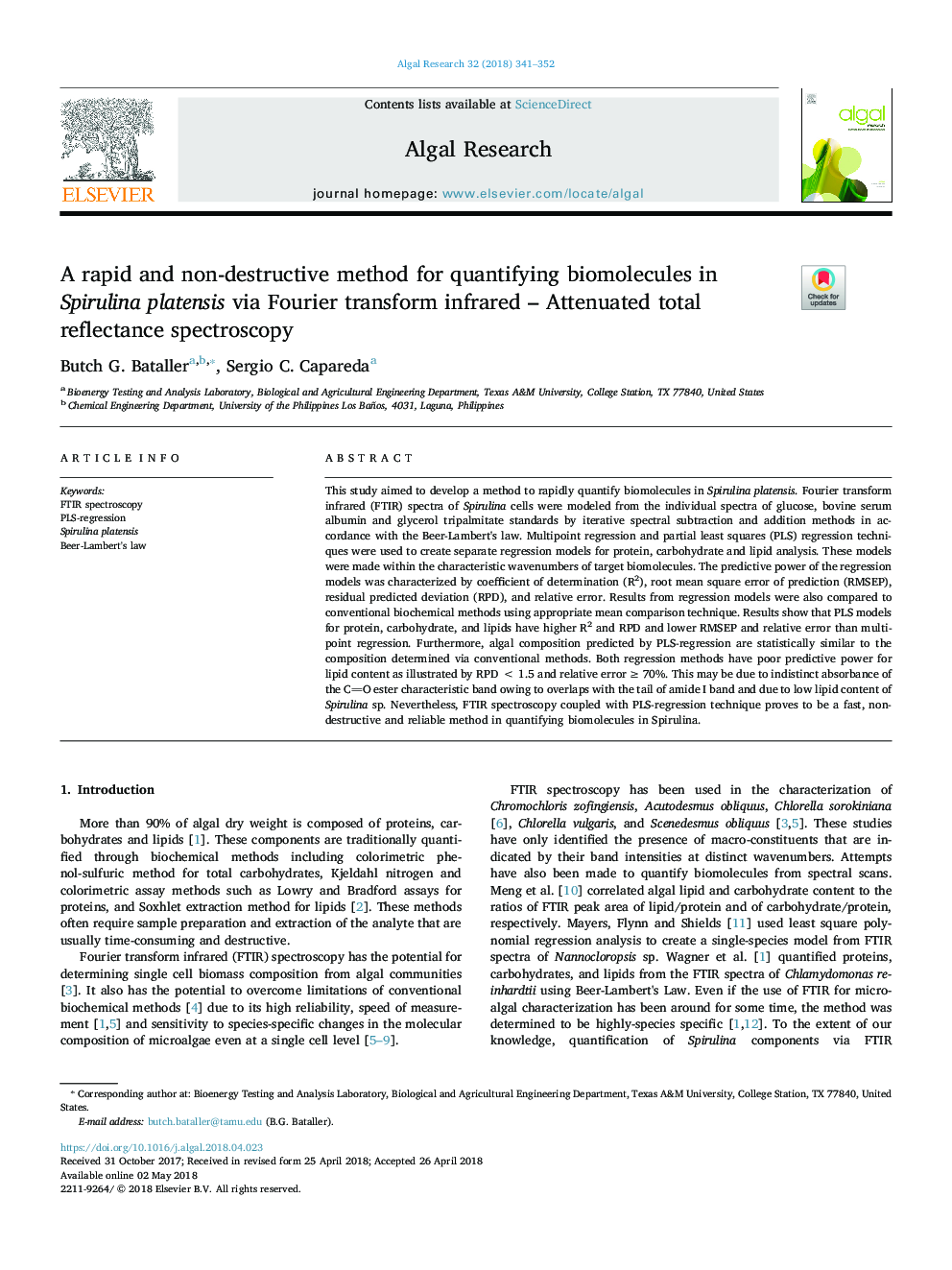| Article ID | Journal | Published Year | Pages | File Type |
|---|---|---|---|---|
| 8085895 | Algal Research | 2018 | 12 Pages |
Abstract
This study aimed to develop a method to rapidly quantify biomolecules in Spirulina platensis. Fourier transform infrared (FTIR) spectra of Spirulina cells were modeled from the individual spectra of glucose, bovine serum albumin and glycerol tripalmitate standards by iterative spectral subtraction and addition methods in accordance with the Beer-Lambert's law. Multipoint regression and partial least squares (PLS) regression techniques were used to create separate regression models for protein, carbohydrate and lipid analysis. These models were made within the characteristic wavenumbers of target biomolecules. The predictive power of the regression models was characterized by coefficient of determination (R2), root mean square error of prediction (RMSEP), residual predicted deviation (RPD), and relative error. Results from regression models were also compared to conventional biochemical methods using appropriate mean comparison technique. Results show that PLS models for protein, carbohydrate, and lipids have higher R2 and RPD and lower RMSEP and relative error than multipoint regression. Furthermore, algal composition predicted by PLS-regression are statistically similar to the composition determined via conventional methods. Both regression methods have poor predictive power for lipid content as illustrated by RPDâ¯<â¯1.5 and relative errorâ¯â¥â¯70%. This may be due to indistinct absorbance of the CO ester characteristic band owing to overlaps with the tail of amide I band and due to low lipid content of Spirulina sp. Nevertheless, FTIR spectroscopy coupled with PLS-regression technique proves to be a fast, non-destructive and reliable method in quantifying biomolecules in Spirulina.
Related Topics
Physical Sciences and Engineering
Energy
Renewable Energy, Sustainability and the Environment
Authors
Butch G. Bataller, Sergio C. Capareda,
